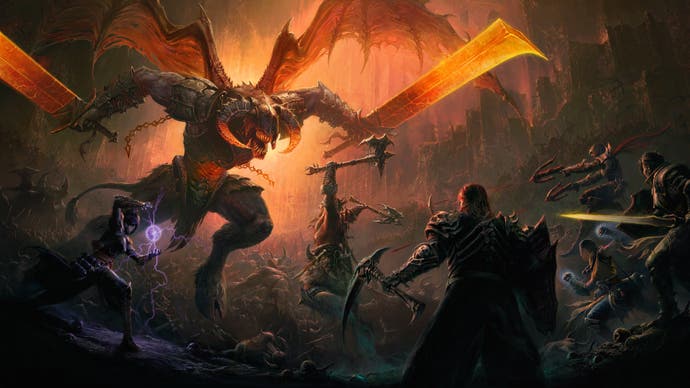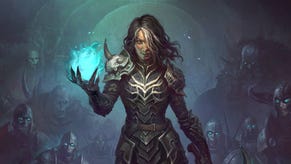Diablo Immortal enters alpha testing - and it seems great
But?
Two years after its unveiling at BlizzCon 2018 met a hostile reaction from fans, Diablo Immortal - the Diablo game that commits the terrible sins of not being Diablo 4, and being a mobile game - has broken a long, cowed silence. After that reception, Blizzard was unlikely to do anything with the game until it had something substantial to show, and so it has proved. At a Zoom briefing with the developers earlier this week, press were told that the game was entering a "very limited" public technical alpha test that has just gone live as you read this. We were also given early access to the alpha, so I've had a chance to try it out, albeit briefly.
Unlike the BlizzCon 2018 demo, this is a substantial chunk of game, with a level cap of 45, four character classes to try, many of the game's features (excluding the in-game shop, but more on that later), a massively multiplayer city hub and multiple adventure zones and dungeons to explore. While there is doubtless a lot of debugging, optimisation and balancing still to do, for an alpha, it is extraordinarily polished. It plays well and it looks, sounds and feels incredibly close to the Diablo 3 experience on PC or (especially) console. Sound and visual effects are instantly familiar, as are many of the class skills, many of the enemy designs, and the gothic stylings and snappy response of the UI.
I've tried it on my iPhone 8 and sixth-generation iPad, both of which, I believe, are towards the lower end of devices that are supported by this alpha. It was a good, if not flawless experience on both. The iPhone 8's 4.7-inch screen is comfortable for the controls but on the small side for presenting the busy action and relatively complex UI. The phone itself does not seem to be struggling though, and the game plays smoothly (though it lunches the battery). Meanwhile, the iPad screen makes for a beautiful portal onto the world of Sanctuary, but it can feel a bit ungainly in the hands and the framerate chugs a little. (Blizzard is planning to make graphical settings available and even 30fps and 60fps modes, depending on the phone you use.) Network stability has been iffy on both, but I'm sure netcode is one of the areas where Blizzard expects to gather the most data and make the biggest improvements during this technical alpha.
If playing Diablo on a phone is hard to wrap your head around, remember that a decade ago we might have said the same about playing it on a pad. The deceptive ease with which Diablo 3 made the transition to console - and indeed, how revivifying that was for the game itself - is no doubt behind the existence of this new mobile game. But it is a slightly bigger departure. You move your character with a virtual thumbstick on the left, setting off skills by tapping a cluster of buttons on the right. There's a generous auto-aim, but if you want to manually aim your skill you can do so, twin-stick style, by holding down on the button and sliding your thumb around in a circle. As in all Diablo games, you need to stand still to use your skills.
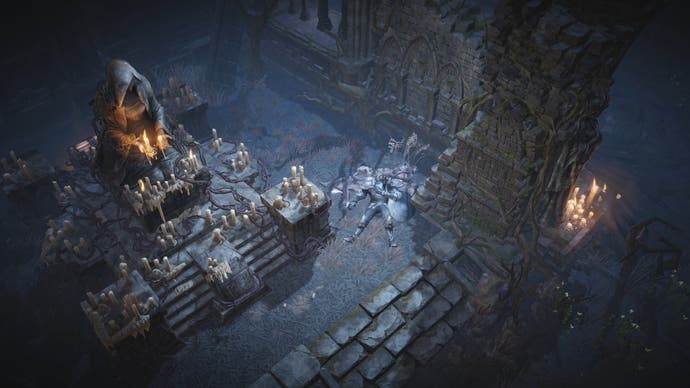
It works. It's slower and more deliberate than playing on a pad, never mind with a mouse, and the pace of the game seems to have eased up somewhat as a result. I also felt like my Wizard could take quite a lot of hits before dying - more of a perspex cannon than a glass one - which might be to balance out the human-side lag in the touch controls. Then again, it might just be some generous difficulty balancing for the start of the game, which otherwise doesn't mess around, confronting you with some tricky bosses and elite monster packs within the first hour of play.
Skills are earned and rank up as you level, but Diablo Immortal hasn't inherited Diablo 3's rune system for customising skills. Instead, there's an equipment slot for a Charm loot item that will allow deep modification of key skills, and lead designer Wyatt Cheng says the Charm is one of the most complex systems in the game which he hopes will delight hardcore theorycrafters ("it's not for the faint of heart", he says). Otherwise, there are six primary and six secondary equipment slots for items that can be customised with gems, reforged to reroll their attributes and, for the first time in a Diablo game, ranked up by salvaging materials from unwanted gear.
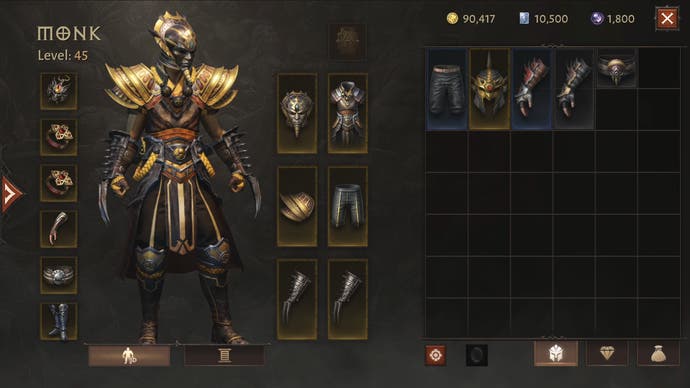
In short, it sounds like the deep item game you expect from a Diablo. Of course, the question is how this will work in a game that is free-to-play. Cheng and lead producer Caleb Arseneaux are extremely firm that all items you wear on your character - and show off to other players - can only be earned by looting them from monsters or buying from vendors in the game world. They can't be traded with other players or bought with real currency. That makes sense for Diablo, where dressing up your doll and wearing your bragging rights on your sleeve is so much of the appeal. But it also closes off one of the most obvious revenue streams for a free-to-play game - cosmetics. So what is Blizzard going to sell?
Definitely not energy, or any system that limits the amount you can play. Blizzard insisted this will be a game you can play as long as you like without paying anything. Content updates, including new zones and character classes, will also be free. Cheng and Arseneaux gave three examples of purchases that would meet the criteria of being optional, preserving a level gameplay field, being worthwhile to the purchaser (and others) and offering a genuine bonus rather than removing a negative effect: Crests, which add random modifiers to Rift dungeons, rather like Skulls in Halo; Reforge Stones, which limit the pool of properties when reforging items to give you more control over the process (without making the results better); and, of course, a battle pass progression system. It sounds like a reasonable plan, and the battle pass is a no-brainer, although the Crest and Reforge Stone items seem to present a fine line to walk.

Just to spice things up, there will be an in-game marketplace too, although Cheng is quick to point out that it will be quite unlike the disastrous, canned Diablo 3 Auction House. It will be anonymous, you won't be able to sell gear (but you will be able to sell gems and other secondary items), you will only be able to sell at market rate, and there will, supposedly, be no way to cash out.
Cheng promises "deeper progression than previous Diablo games": a bold claim that's impossible to test at the moment. It seems to rest on the intricacies of reforging, gemming and upgrading your gear, and a more involved version of the Paragon endgame levelling system that opens up a range of themed skill trees to choose between at the level cap rather than Diablo 3's bottomless skill point wells. Unlike in Diablo 3, Paragon levelling won't be infinite but will be capped by the number of these trees, which will be added to over time. "We don't want an infinite Paragon grind," says Cheng. "You can actually have a moment where you can say you've maxed out your character."
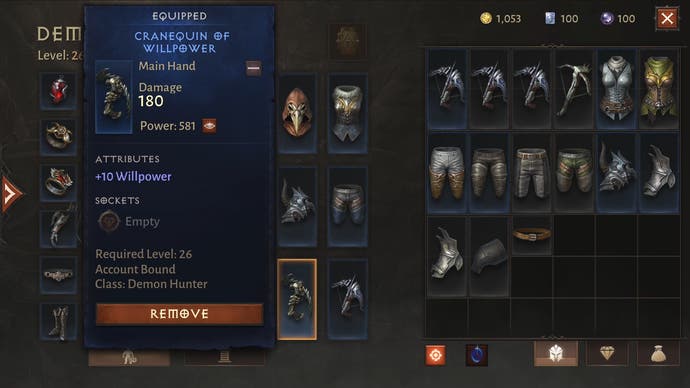
Structurally the game has quite a lot in common with World of Warcraft - it's an MMO lite rather than a classical action RPG. You'll encounter other players organically as you wander the world or the streets of Westmarch, the social hub, and players will number in the tens of thousands per server. (In the controversy over Diablo heading to mobiles, we all kind of glossed over the fact that Blizzard is making its second MMO.) As you level, all quests and dungeons can be played either solo or cooperatively, up to a team of four, but the plan is to require four players in max-level dungeons at higher difficulties. There will also be Zone Trials - giant world bosses intended to challenge mass gatherings of players from across the server - and other familiar MMO trappings.
Many of Diablo's structural signatures remain, though. Difficulty modes are in; in the alpha, you can move from Normal to Nightmare and Hell modes at the level cap. The randomised Rifts that came to dominate Diablo 3's endgame play are back too, as well as leaderboard-chasing Challenge Rifts. Bounties - "small quests that send you out across Sanctuary" - sound like a way to mix the freeform play of Diablo 3's Adventure Mode into this necessarily more structured game. The permadeath hardcore mode is out, although Cheng says the team is interested in implementing a roguelike-style game-within-the-game, like Hearthstone dungeon runs or WOW's new Torghast tower.
It's clearly a big game, and even in 2020 I'm taken aback to encounter a full-scale Blizzard production on a mobile. It shouldn't be surprising, but it is. That also goes for the fact that Blizzard has found a way to make Diablo, always its most supple and immediate creation, play just like itself on a touchscreen. I'm excited to spend more time with it over the break and report back in the new year. There are still a lot of big ifs in Diablo Immortal's grand design and its business plan - but as yet, there's no big but.
